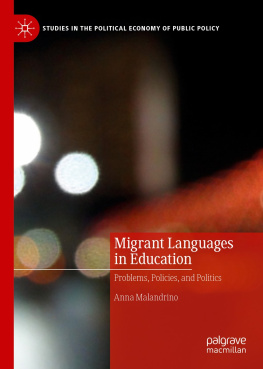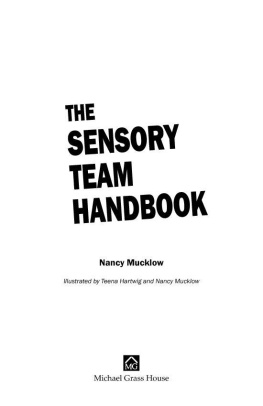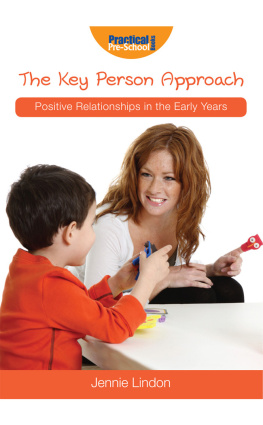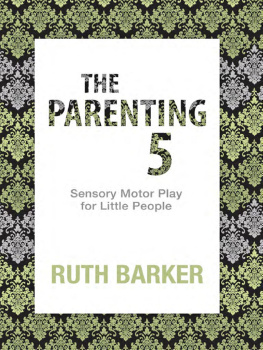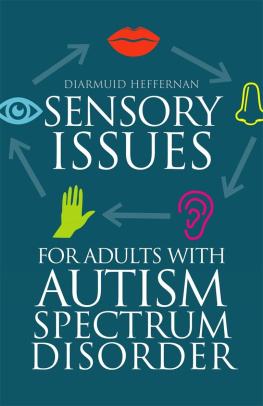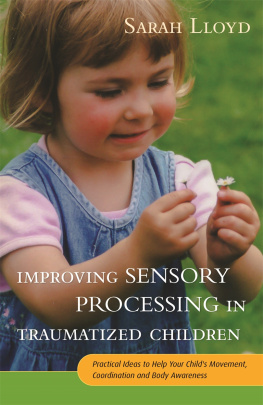A Sensory Education
A Sensory Education takes a close look at how sensory awareness is learned and taught in expert and everyday settings around the world. Anna Harris shows that our sensing is not innate or acquired, but in fact evolves through learning that is shaped by social and material relations. The chapters feature diverse sources of sensory education, including field manuals, mannequins, cookbooks and flavour charts. The examples range from medical training and forest bathing to culinary and perfumery classes. Offering a valuable guide to the uncanny and taken-for-granted ways in which adults are trained to improve their senses, this book will be of interest to disciplines including anthropology and sociology as well as food studies and sensory studies.
Anna Harris is an Associate Professor in the Department of Society Studies at Maastricht University, the Netherlands.
Sensory Studies
Series editor: David Howes
This series comprises cutting-edge case studies and syntheses in the emergent field of sensory studies. It provides an invaluable resource for those involved in research or teaching on the senses as object of study and/or means of inquiry. Embracing the insights of a wide array of humanities and social science disciplines, the field of sensory studies has emerged as the most comprehensive and dynamic framework yet for making sense of human experience. This series offers something for every disciplinary taste and sensory inclination.
Sensory Arts and Design
Ian Heywood
Food and Multiculture
A Sensory Ethnography of East London
Alex Rhys-Taylor
Heritage Formation and the Senses in Post-Apartheid South Africa
Aesthetics of Power
Duane Jethro
Race and the Senses
The Felt Politics of Racial Embodiment
Sachi Sekimoto, Christopher Brown
A Sensory Education
Anna Harris
Sounding Out Japan
A Sensory Ethnographic Tour
Richard Chenhall, Tamara Kohn and Carolyn S. Stevens
https://www.routledge.com/Sensory-Studies/book-series/BLANTSS
First published 2021
by Routledge
2 Park Square, Milton Park, Abingdon, Oxon OX14 4RN
and by Routledge
52 Vanderbilt Avenue, New York, NY 10017
Routledge is an imprint of the Taylor & Francis Group, an informa business
2021 Anna Harris
The right of Anna Harris to be identified as author of this work has been asserted by her in accordance with sections 77 and 78 of the Copyright, Designs and Patents Act 1988.
The Open Access version of this book, available at www.taylorfrancis.com, has been made available under a Creative Commons Attribution-Non Commercial-No Derivatives 4.0 license.
Trademark notice: Product or corporate names may be trademarks or registered trademarks and are used only for identification and explanation without intent to infringe.
British Library Cataloguing-in-Publication Data
A catalogue record for this book is available from the British Library
Library of Congress Cataloging-in-Publication Data
Names: Harris, Anna, author.
Title: A sensory education / Anna Harris.
Description: Abingdon, Oxon; New York, NY: Routledge, 2021. | Series: Sensory studies | Includes bibliographical references and index. | Identifiers: LCCN 2020024532 | ISBN 9781350056121 (hardback) | ISBN 9781003084341 (ebook)
Subjects: LCSH: Senses and sensationPsychological aspects. | Senses and sensationStudy and teaching.
Classification: LCC BF233 .H278 2021 | DDC 152.1dc23
LC record available at https://lccn.loc.gov/2020024532
ISBN: 978-1-350-05612-1 (hbk)
ISBN: 978-1-003-08434-1 (ebk)
Typeset in Times New Roman
by codeMantra
Research for this book has received funding from the ERC under the European Unions Horizon 2020 research and innovation program (grant agreement No 678390).
To Thomas and Bastian, who always notice
One evening, during one of my knitting groups regular gatherings, I wanted to learn a new stitch. I was struggling with the instructions described in the pattern I was following, printed from a free online website. The instructions seemed to make sense but I just could not get my fingers, the wool and the needles to work in harmony. I kept ending up with either knotted chaos or large holes each time I tried. Conversation was flowing amidst the endless tea, and literally, because they are all very good knitters, needles were click clacking. I piped up: how do I do this stitch? As always happened, a stream of excellent advice followed. The knitter next to me leaned over and took my needles, a little awkwardly as she tried to mimic how I held them rather than her own continental style that she had learned as a child, and worked through the stitch several times. I tried to squeeze in close to her so I was not seeing the mirror image, but rather viewing it from her perspective, so I could best repeat the manoeuvre. I tried to notice carefully how she pulled the wool, to watch how she held the needles and take note of the various steps involved in the new stitch. She gave me my knitting back, to practice. The knitter on the other side of me leaned over. She had her iPad in her hand and had set-up an online video for me to watch, by one of her favourite knitting vloggers, of how to make that particular stitch. I could see a close-up of hands and wool in the freeze-framed image, with many comments below. I watched the video repeatedly, freeze-framing whenever I wanted to see something closely. Another of the knitters was watching this and when I stopped the video, she told me that she learned that stitch by unravelling a sweater she watched how the wool went through the loops as she took it apart and then tried to recreate it herself. The fourth knitter in the group was quiet, for she was immersed in an extremely complicated numerical knitting pattern of the kind I would never have any hope of following.
Cradled within the lessons I learned that evening is the essence of this book, for it is a book about the social and material nature of sensory education. We learn things in life with others and with things. We learn in everyday encounters and in expert settings such as schools and other educational institutions. The knitting lesson offers just one example of the many different ways of going about, and the many different kinds of media involved in, this sensory education there are written instructions, videos and other demonstrations, lessons from others and learning from materials and memory. Sensory lessons demand the cultivation of a particular art of noticing. All learning is sensory. Lessons in life and at school are bodily, sensory engagements with others and things and places whereby transformations, ideally, occur. It is these everyday and expert sensory lessons that I refer to when I talk of sensory education. The topic of sensory education is time-old. So why is this important to explore again, now, in a new book?
First and foremost, I need to point out who might consider this important, because most of the practices described in this book are those involving Western middle-classes, seeking a life of betterment, whether in their everyday life or through university education. Sensory education in these cases is a choice, not a matter of survival or getting enough to live by. Some of the practices that are described in much of the literature on sensory training, and that is included in this book, such as wine tasting and perfume making, could be considered as incredibly elitist activities that certainly wouldnt speak to all readers of this book. They are practices that individuals engage in because of certain conditions such as time (with more menial labour outsourced to others), security, privilege and wealth. Some of the higher education I describe, such as medical school, is also not open to everyone in some parts of the world.



